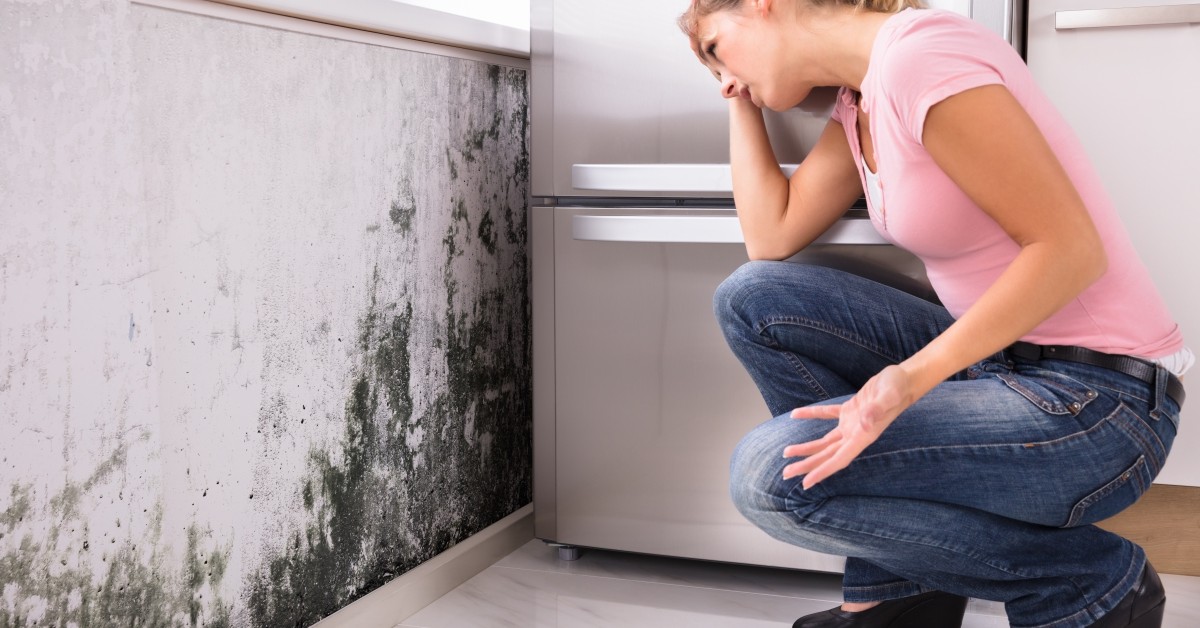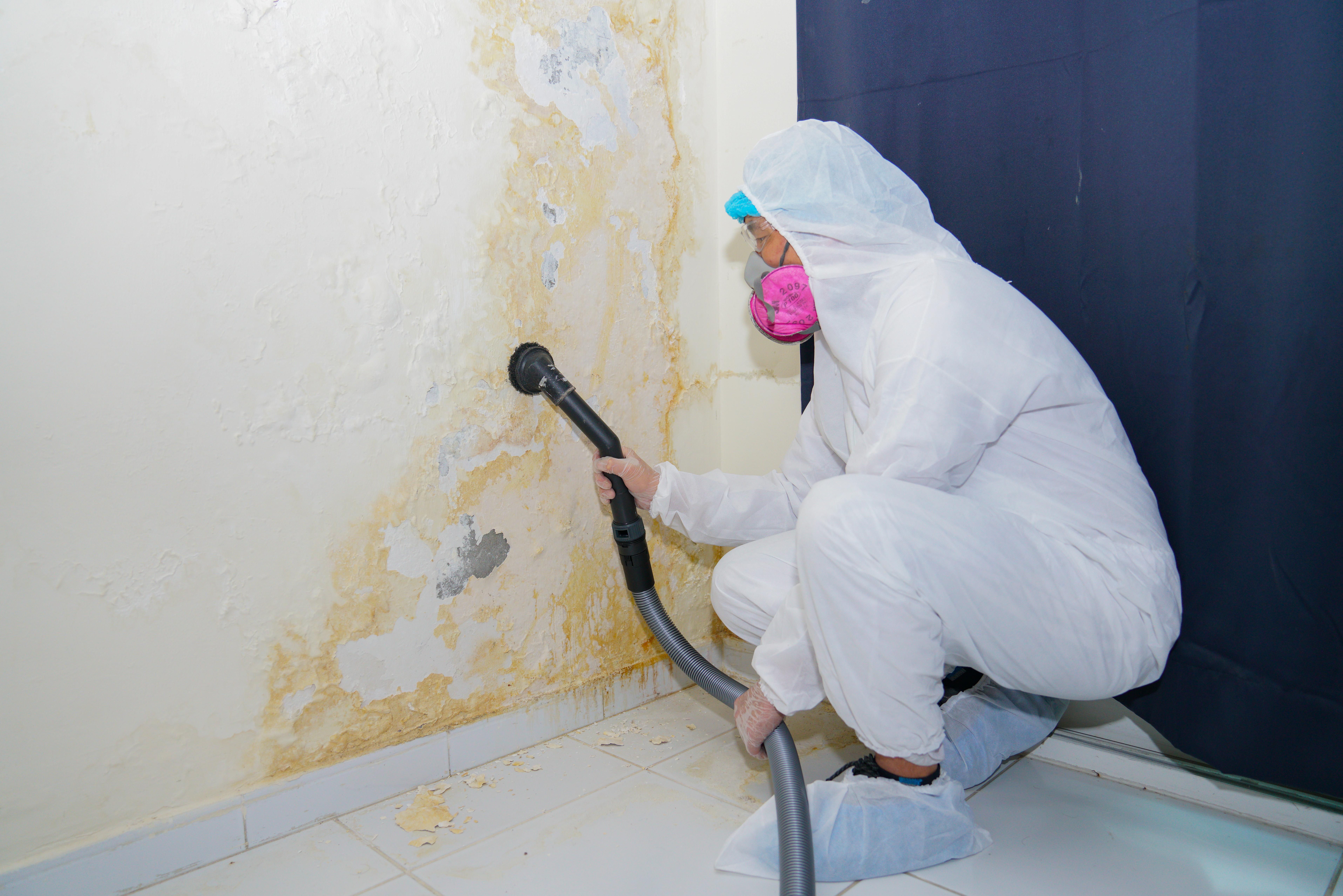Professional Tips for Post Mold Remediation Success
In the realm of mold remediation, effectively eradicating mold is just half the fight; the real obstacle lies in preventing its reappearance. By adhering to expert tips and finest methods, people can safeguard their rooms versus mold revival and preserve a healthy interior setting.
Screen Moisture Degrees Frequently
Regular surveillance of humidity levels is important in guaranteeing the efficiency of message mold and mildew remediation efforts. After finishing mold remediation treatments, maintaining optimum humidity levels is important to avoid mold and mildew re-growth and guarantee a healthy interior setting. Surveillance moisture degrees enables very early discovery of any kind of spikes or changes that can possibly result in mold resurgence. High moisture levels over 60% develop a conducive atmosphere for mold to grow, making regular checking an aggressive step to avoid any future mold and mildew concerns - After mold remediation.
In addition, establishing a routine timetable for moisture checks, especially in risky locations such as cellars, kitchen areas, and bathrooms, is an aggressive approach to mold and mildew prevention. By regularly keeping track of moisture degrees, residential property owners can successfully minimize the danger of mold and mildew reoccurrence and keep a healthy and balanced interior setting post-remediation.
Conduct Thorough Inspections Post-Remediation
Adhering to the completion of mold removal treatments, it is imperative to carry out detailed assessments to verify the efficiency of the removal procedure. These post-remediation examinations are crucial in guaranteeing that the mold and mildew concern has actually been efficiently addressed and that there is no reoccurrence or continuing to be mold and mildew growth. Examinations must be performed by certified professionals that have know-how in recognizing mold and mildew and analyzing indoor air top quality.
Throughout these inspections, different techniques such as aesthetic assessments, air sampling, and surface area sampling might be employed to completely examine the remediated locations. Visual analyses entail an in-depth examination of the facilities to look for any noticeable indications of mold growth or water damages. Air tasting helps in identifying the airborne mold spore levels, while surface area tasting can detect mold particles on surfaces.
Implement Correct Air Flow Methods
After ensuring the performance of the mold and mildew removal procedure via comprehensive evaluations, the next crucial step is to concentrate on executing correct air flow strategies. Adequate air flow is necessary in avoiding mold and mildew reoccurrence by managing moisture levels and promoting air flow. To accomplish this, it is suggested to utilize exhaust fans in areas vulnerable to high humidity, such as cooking areas and shower rooms. Furthermore, opening doors and windows when climate allows can help improve air flow and decrease wetness accumulation. Air dehumidifiers and purifiers are additionally valuable tools in preserving ideal indoor air top quality.
Proper ventilation not just aids in stopping mold and mildew development but also adds to the general health and wellness and comfort of here are the findings passengers. By making sure adequate ventilation throughout the residential or commercial property, you can lower the risk of mold and mildew regrowth and create a much healthier living setting. Regular maintenance of air flow systems, including cleansing and filter replacements, is vital to maintaining efficient air flow. Consulting with a/c experts can offer more understandings right into enhancing air flow methods for your specific building needs.

Usage Mold-Resistant Materials for Repair Works
To improve the long-lasting efficiency of mold and mildew removal efforts, integrating mold-resistant materials for fixings is essential in reducing the risk of future mold and mildew development. Mold-resistant products are created to withstand dampness and inhibit mold and mildew development, making them a necessary choice for locations susceptible to moisture and moisture. When repairing areas impacted by mold, utilizing materials such as mold-resistant drywall, mold-resistant paints, and mold-resistant caulking can assist avoid mold recurrence.
Mold-resistant drywall is an exceptional choice to typical drywall in areas like restrooms and cellars where moisture levels are higher. This kind of drywall has an unique layer that withstands mold growth also when subjected to damp conditions. In addition, using mold-resistant paints having antimicrobial agents can better prevent mold growth on walls and ceilings.
In areas where dampness prevails, such as bathroom and kitchens, using mold-resistant caulking around try this out windows, tubs, and sinks can assist seal out water and prevent mold and mildew from holding in cracks and holes. By purchasing these mold-resistant materials during repair work post-remediation, you can substantially minimize the chance of future mold and mildew concerns and keep a healthier indoor atmosphere.
Maintain Tidiness and Address Water Issues
Guaranteeing sanitation and without delay dealing with water problems are essential techniques to maintain in guarding indoor spaces from mold and mildew reinfestation. After mold remediation, it is critical to keep a clean environment to protect against the regrowth of mold and mildew (Post Mold Remediation Report). Normal cleaning, dusting, and vacuuming can assist get rid of any type of lingering mold and mildew spores and avoid them from proliferating and resolving. Additionally, keeping interior areas dry and attending to any water issues promptly is necessary in mold prevention. Leaks, water breach, or high humidity degrees can develop the ideal breeding ground for mold and mildew, so it is essential to deal with any type of water-related problems promptly.
To keep cleanliness, think about using HEPA filters in vacuums and air cleansers to catch mold spores and avoid their blood circulation airborne. Making sure appropriate air flow in areas prone to moisture buildup, such as bathrooms and kitchen areas, can assist keep moisture degrees in check. By staying watchful concerning sanitation and attending to water issues immediately, you can effectively prevent mold reinfestation and preserve a healthy and balanced indoor atmosphere.
Final Thought

In the realm of mold removal, efficiently eliminating mold is only half the fight; the real difficulty lies in preventing its reappearance. After finishing mold remediation treatments, maintaining ideal moisture levels is critical to protect against mold and mildew re-growth and ensure a healthy and balanced interior environment. High moisture levels above 60% develop a helpful atmosphere for mold and mildew to thrive, making normal checking an aggressive measure to protect against any future mold and mildew issues.
To boost the long-term performance of mold remediation efforts, including mold-resistant materials for repair work is important in alleviating the risk of future mold development. After mold and mildew remediation, it is important to keep a tidy environment to stop the regrowth of mold.
Comments on “Reliable Post Mold Remediation Cleaning Protocols”